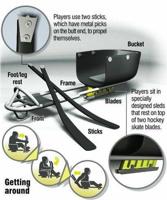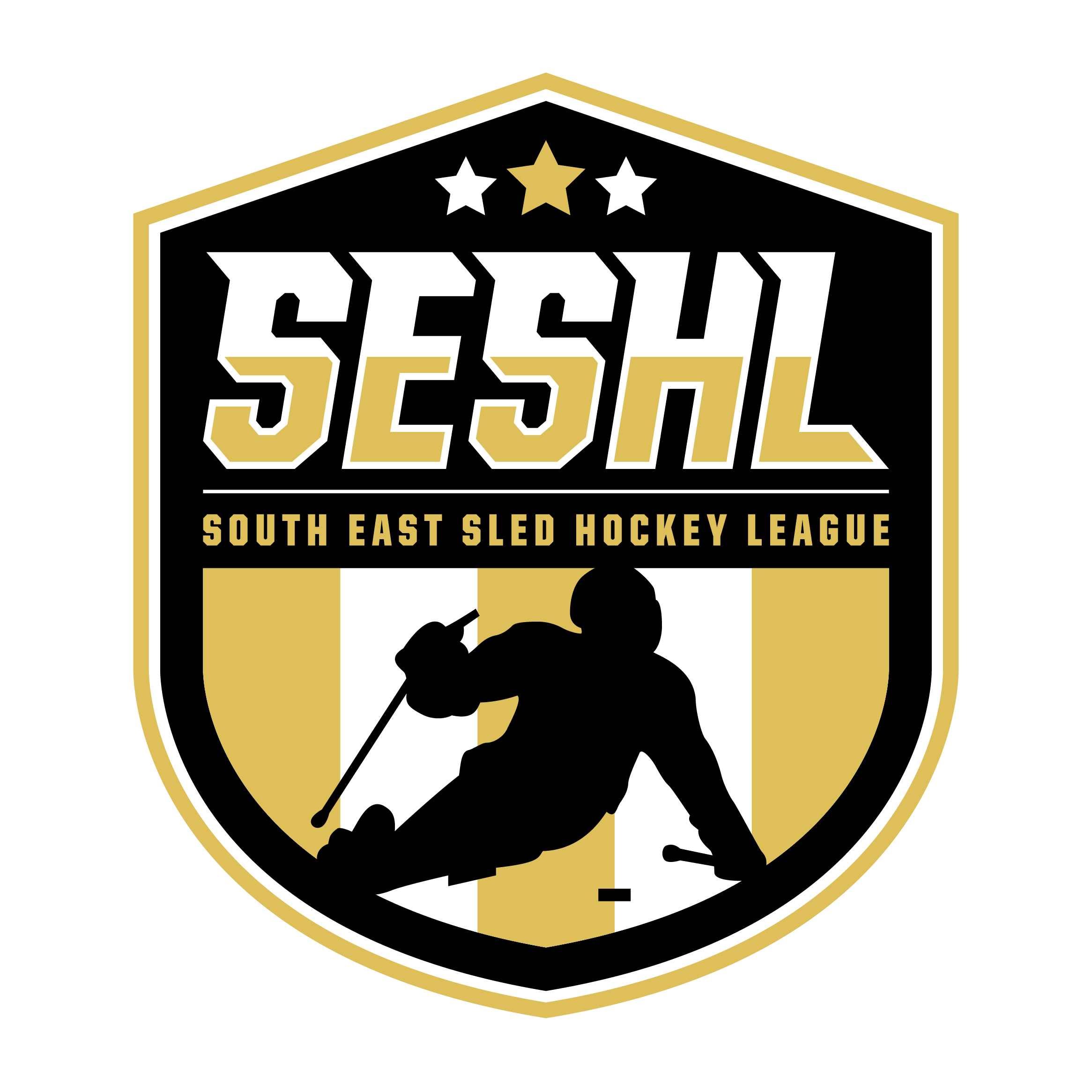Sleds are usually made of light-gauge aluminum, consisting of a customized bucket to sit in. A backrest can be used depending on the ability of the athlete. A frame supports the bucket, legs and feet, and is mounted on two skate blades attached under the bucket. Straps keep the player secure in the sled.
Athletes with double lower-limb loss tend to have an advantage here, since they can use shorter sleds with no leg supports, resulting in a smaller turn radius.
Instead of one hockey stick, players use two for propulsion, passing and shooting. The sticks may be up to 100 cm long (roughly 3 feet) but are usually between 75-95 cm and can be wood, aluminum, or composite materials. The sticks have metal picks on one end for players to propel themselves. Those with limited grip can have sticks secured to their hands allowing them to participate.
Players are outfitted with a hockey helmet with face mask, gloves, and body protection including shoulder pads, shin guards, elbow pads, neck guard, and hockey gloves.
Goalies wear basically the same equipment but do make modifications to the glove; metal picks are attached to the backside allowing the goalie to maneuver.
Sled hockey has a relatively small number of equipment suppliers to provide the sleds, sticks, and picks that are unique to sled hockey. All other hockey equipment that is necessary such as helmets, gloves, etc. can be bought from any other stand-up hockey equipment supplier.

